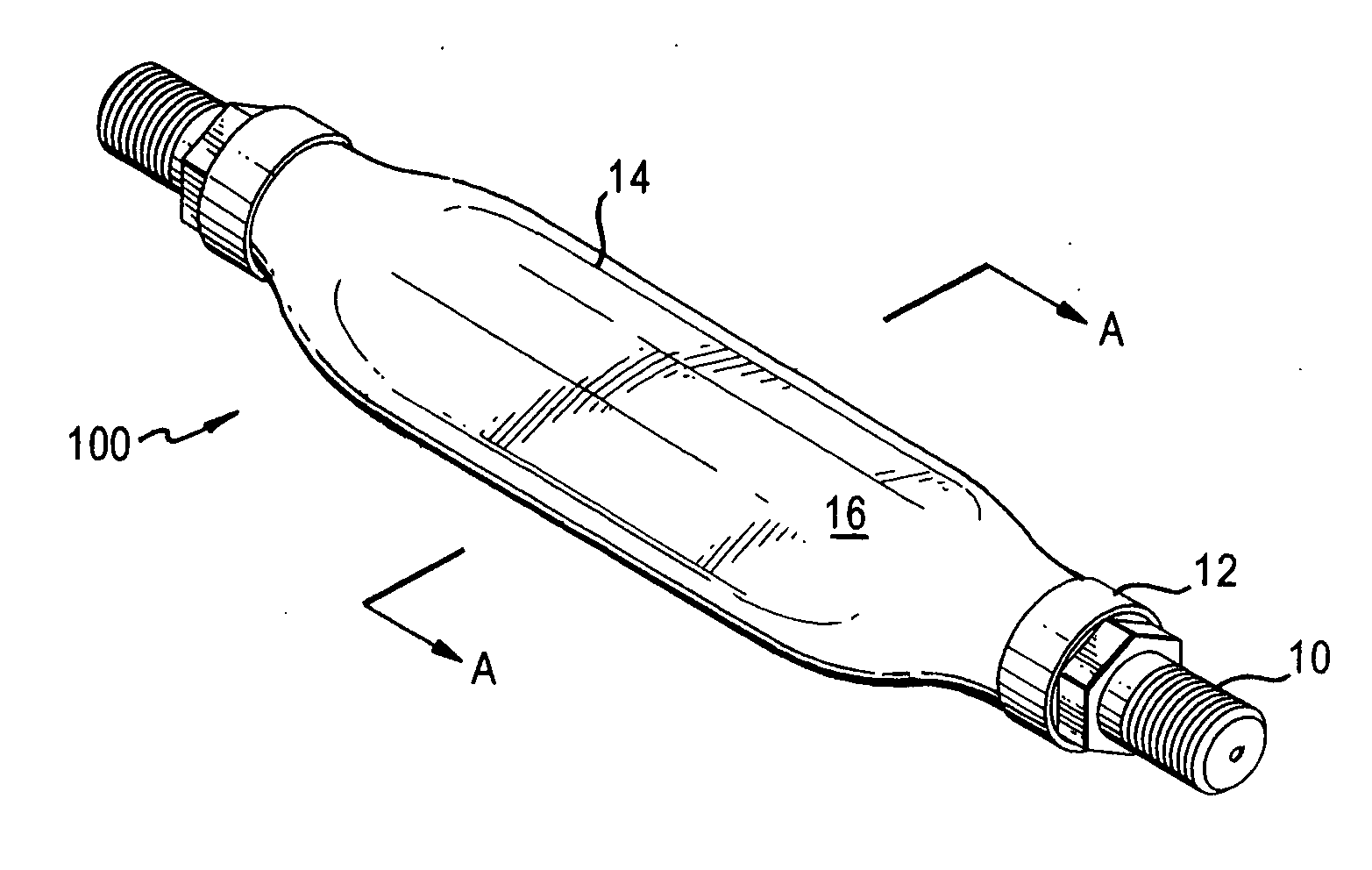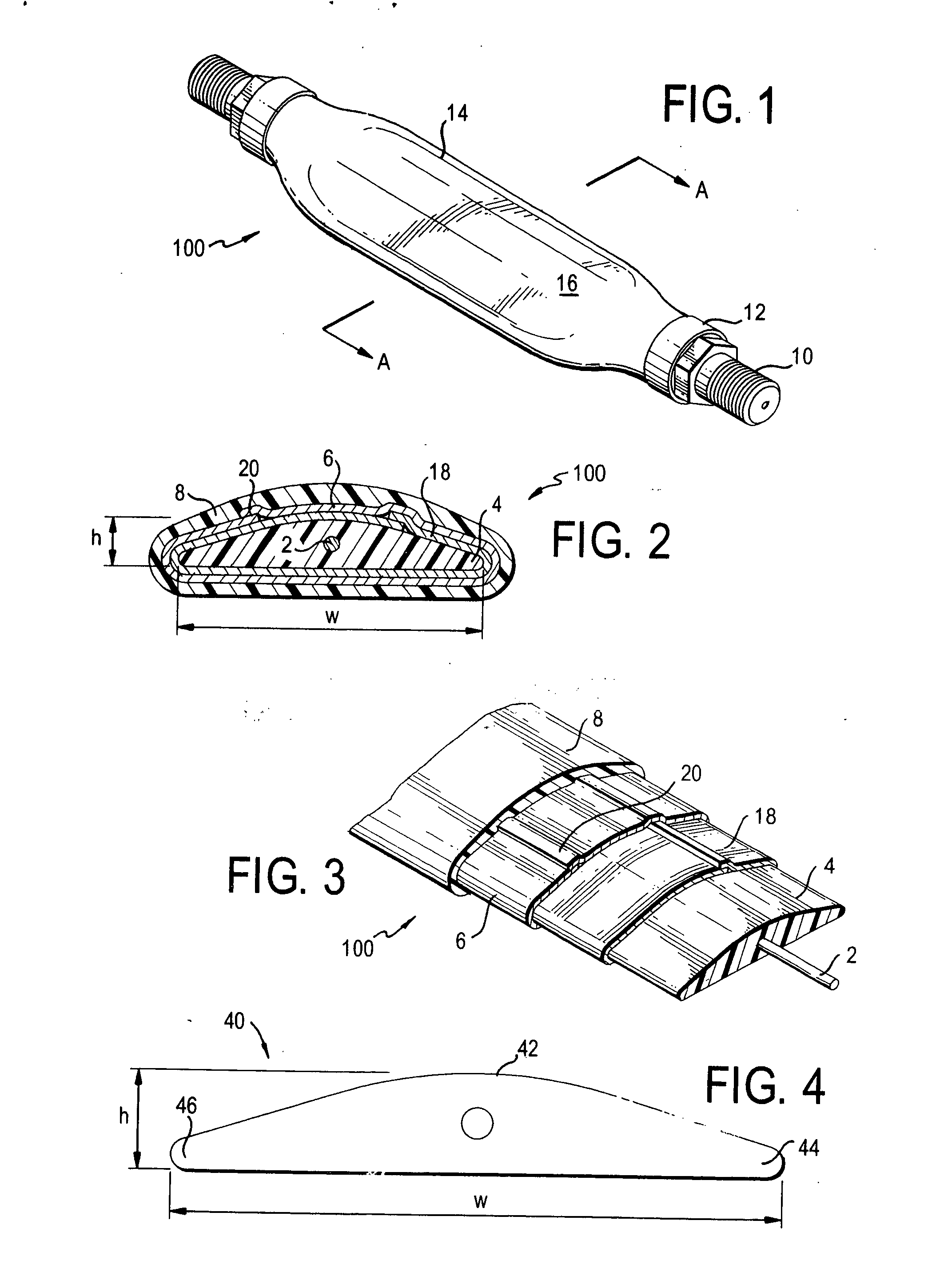Coaxial cable jumper device
a technology of coaxial cable and jumper device, which is applied in the direction of coupling device connection, cables, insulated conductors, etc., can solve the problems of insufficient resistance of coaxial cables to pull forces, inability to meet the needs of outdoor environment, so as to facilitate passage through space, minimize thickness build-up, and provide stability of electrical characteristics during flexure
- Summary
- Abstract
- Description
- Claims
- Application Information
AI Technical Summary
Benefits of technology
Problems solved by technology
Method used
Image
Examples
Embodiment Construction
[0021] This disclosure provides and discloses exemplary embodiments. In particular, the specification discloses one or more embodiments that incorporate the features of the invention. The embodiment(s) described, and references in the specification to “one embodiment”, “an embodiment”, “an example embodiment”, etc., indicate that the embodiment(s) described may include a particular feature, structure, or characteristic, but every embodiment may not necessarily include the particular feature, structure, or characteristic. Moreover, such phrases are not necessarily referring to the same embodiment. Further, when a particular feature, structure, or characteristic is described in connection with an embodiment, persons skilled in the art may effect such feature, structure, or characteristic in connection with other embodiments whether or not explicitly described.
[0022]FIG. 1 shows an embodiment of the present invention. The cable (100) generally contains two ends and a middle portion (1...
PUM
| Property | Measurement | Unit |
|---|---|---|
| heat shrink | aaaaa | aaaaa |
| impedance | aaaaa | aaaaa |
| electrically insulating | aaaaa | aaaaa |
Abstract
Description
Claims
Application Information
 Login to View More
Login to View More - R&D
- Intellectual Property
- Life Sciences
- Materials
- Tech Scout
- Unparalleled Data Quality
- Higher Quality Content
- 60% Fewer Hallucinations
Browse by: Latest US Patents, China's latest patents, Technical Efficacy Thesaurus, Application Domain, Technology Topic, Popular Technical Reports.
© 2025 PatSnap. All rights reserved.Legal|Privacy policy|Modern Slavery Act Transparency Statement|Sitemap|About US| Contact US: help@patsnap.com



